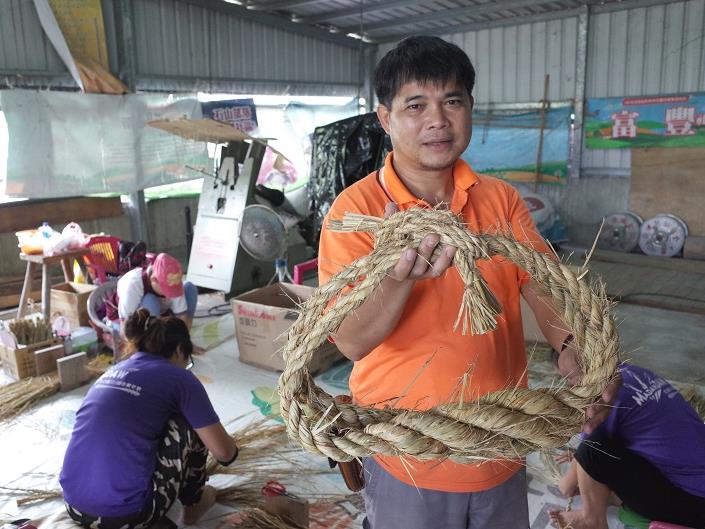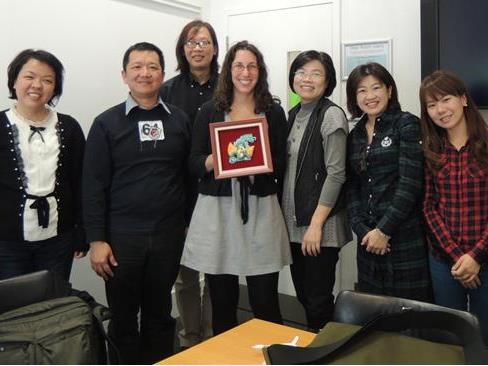Community development
Community development

Home/Tag/Community development
Money Does Grow on Trees: Green Leaves to Greenbacks
Edited by: Huang Yu-Jung
After Kamikatsu’s cash crops were devastated by a harsh cold front during the 1980s, Tomoji Yokoishi headed the effort to turn over a new leaf and found hope for the town in the surrounding mountains.
Kamikatsu is a remote town surrounded by mountains in the Tokushima Prefecture. As a small town of 2,000 with half its population elderly, the cold front that wiped out their main source of revenue was a devastating blow to the local farmers. To revitalize the local economy, the farm management instructor of the Kamikatsu agricultural co-op, Tomoji Yokoishi, began to experiment cultivating various crops. After ceaseless round-the-clock efforts, he personally transformed Kamikatsu into the kingdom of shiitake mushrooms. However, shiitake mushroom cultivation is labor-intensive. Even if they are willing, elderly farmers aren’t able to take on the work. Consequently, he started searching for work that even female senior citizens can easily handle.
Finding the Solution Right under their Noses
One day while eating at a sushi restaurant in Osaka, Yokoishi overheard a woman sitting next to him exclaim, “Oh, how pretty! I’m going to take it home!” and carefully wrapped the ornamental leaf that decorated her plate of sushi in her handkerchief to take home. Leaves that are ubiquitous in the mountain forests have been given an entirely new value in the city.
He had an epiphany, “This is it! Let’s sell leaves!” If they sold leaves that can be found everywhere in the mountains and forests of Kamikatsu as tsumamono1 (garnish) that high-end Japanese ryotei use to enhance the aesthetic appeal of dishes, he has found work that even grannies can accomplish effortlessly.
After returning to Kamikatsu, he communicated his idea to the villagers and the most frequent response he received was “Are you out of your mind?” Although people dismissed his idea as absurd, Yokoishi did not give up. First, he studied the art of tsumamono and invited local farmers to dine in popular restaurants to stimulate their interest. Then, he invited chefs to conduct plate arrangement lectures locally. With his dedicated efforts, the locals eventually developed a keen interest in selling leaves as a product. Thanks to his enthusiasm, the voices of objection gradually became voices of support. After collecting leaves from the mountain forests, they packaged and marketed them under “Irodori” (bright colors in Japanese).
In 1986, Irodori was officially established as a company. The business had a rocky start with only four farmers collaborating and large quantities of unsold leaves piled up in the warehouse. Instead of feeling discouraged, Yokoishi invested all of his salary in the business and spent two years constantly dining at well-known Japanese ryotei, learning the subtle nuances and significance of various flowers and leaves, and observing how to aesthetically present the four seasons on the dish. With such perseverance, business gradually picked up and the number of farmers willing to cooperate increased significantly. Now, Irodori cultivates over 320 species of plants and generates an estimated net value of ¥260 million a year. The success of Irodori and its contribution to the local community has received considerable attention. In 2007, Yokoishi authored a book on the development of Kamikatsu and Irodori; in 2012, the book was filmed into a movie that was played nationwide in cinemas across Japan.
The success of Irodori is attributed to two major aspects: knowledge about the four seasons and the balance between supply and demand. Since Japanese cuisine is known for using fresh, seasonal ingredients, therefore tsumamono used to garnish the plate must be harvested in advance. The precise grasp of timing ensures the optimal color of the leaves when they are delivered.
Secondly, the market for tsumamono is driven by demand. Although tsumamono is an important element of Japanese cuisine, it is non-essential. As a result, maintaining a delicate supply-demand balance is crucial. For instance, when the market exhibits demand, if the price spikes too high due to speculation, then there will be a surplus of supply. On the contrary, if there is excess supply, profit will plummet, thus a delicate balance between supply and demand must be maintained. In light of this, Irodori developed the “Irodori” information network to facilitate order management and shipment.
Getting the Right Tools for the Job
HOJO Telecommunication System Co., Ltd. was in charge of designing the Irodori information network. To let seniors easily learn how to operate the information network, the computer was programmed to connect to the network once it booted up and had a customized keyboard with enlarged keys and numbers. Additionally, the system was designed with an intuitive user interface and instruction sessions are frequently conducted.
At the moment, as long as an order is entered into the website, it will be simultaneously faxed to various farmers, and those who are able to accept the order need to immediately contact the farmers’ cooperative by phone to confirm the order. The subsequent shipment record will be published on the website, and the shipments are ranked as well. Through the information network, farmers can observe the shipments of various products to adjust and prepare for product type and strategy. Influenced by the “first come first serve” and “online ranking”, competition between farmers increased and the once lifeless Kamikatsu was reinvigorated and became full of energy.
Presently, more than half of the farmers collaborating with Irodori are senior citizens aged over 60 and among those, most of them are women. Thus for senior citizens or women who are unable to engage in labor-intensive work, the business of selling something as light and as profitable as leaf is most fitting. Despite their advanced age, many grannies are still able to work happily and enthusiastically by reading intelligence provided on the information network to prepare their shipment.
Now 80 years old and earning ¥700,000 every month, Yoshiko says, “The work itself is very interesting. Often, I think about the type of dish the leaves will garnish and who will use them. If I am eating at a restaurant and see tsumamono on my plate, I would reflexively start commenting on their design, thinking ‘Oh, I could also garnish this dish this way’ or ‘I don’t think this garnish fits’. I told myself maybe I should retire at the age of 80. I can’t believe I am 80 already and now I think I will do this until my day comes!” Just like her, many elders have regained purpose and meaning in life through Irodori. After work, many of them have found interest in exercising, dancing or using the computer; since they are too preoccupied with their colorful lifestyle to be sick, many local nursing homes have closed down as a result.
Everything will Fall into Place Once you Set the Ball Rolling
In order to improve the problem of scarce local population, starting from August 2010, Irodori opened its doors for internship application, hoping to enable the public to gain further understanding about Kamikatsu through the experiential activity. Since its inception, everyone has been looking forward to receiving more interns. Up until November 2013, a total of 500 internship applicants were received, and some of them even moved to Kamikatsu. After coming in touch with the younger generation, the local grandpas and grannies became more upbeat and energetic. “To let everyone live freely” is Yokoishi’s expectation for Kamikatsu, and Irodori is striving towards just such a dream!
Note:
1tsumamono: Ornamental leaves or flowers that are used in Japanese cuisine to enhance visual appeal of the dish and reflect the season.
Reference:

This work is licensed under a Creative Commons Attribution-NoDerivatives 4.0 International License.
Please attribute this article to “Workforce Development Agency, Ministry Of Labor”.











